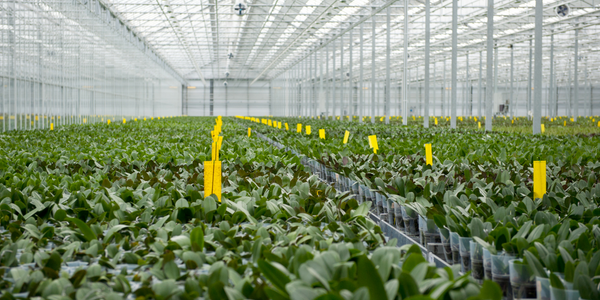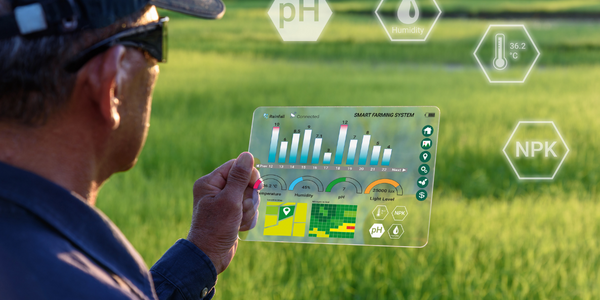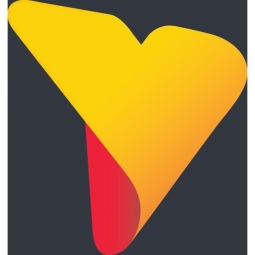Download PDF
RURALCO HOLDINGS LIMITED: How a leading Australian agribusiness enhanced its competitive edge
Technology Category
- Application Infrastructure & Middleware - Data Visualization
- Analytics & Modeling - Predictive Analytics
- Platform as a Service (PaaS) - Data Management Platforms
Applicable Industries
- Agriculture
- Retail
Applicable Functions
- Sales & Marketing
- Warehouse & Inventory Management
Use Cases
- Inventory Management
Services
- System Integration
- Data Science Services
The Challenge
Extracting intellectual property from management in a comprehensive, fast-paced business environment was a challenge for Ruralco. Additionally, the presence of multiple data streams from incongruent systems made it impossible to identify a single source of truth with respect to overall business performance. The company saw two key areas as obstacles to fostering potential growth; a lack of in-house expertise in business intelligence and analytics, coupled with the absence of a structured and timely reporting program. While there was no deficit of available data from various streams, Ruralco lacked the facility to access accurate business-wide information in real-time. The company recognised that harnessing existing data and presenting it in visual format would not only deliver a detailed snapshot of current performance, but also cultivate an ethos of better and more timely decision-making across the business.
About The Customer
Ruralco is a leading player in the Australian agricultural and retail services sector, with more than 2000 employees and $1.6 billion annual operating revenue. A leading Australian agribusiness with more than forty specialist businesses, Ruralco provides real estate, insurance, auctioneer services, agricultural equipment and other services to the Australian rural community. The group caters to the diverse needs of regional and rural Australia, operating 40 separate businesses through a network of 500 outlets nation-wide.
The Solution
Toustone collaborated with Ruralco to develop a business intelligence strategy that would deliver the optimum outcome, utilising the Yellowfin Cloud powered by Toustone platform. The solution automatically draws data from each of the separate sources and presents it via customised, interactive dashboards, ensuring management always has easy and intuitive access to the most up-to-date information. For the sales team, visibility of accurate and current information is invaluable. Client transactions can be accessed in the field via any smart device, with no delay or reliance on back-office admin staff. Email broadcasts show earnings on a MTD and YTD basis, so managers can measure, benchmark and reward the team objectively. Leveraging from the available information, Ruralco combines its own data with that provided from third-parties to generate tailored reports that deliver additional valuable BI and analytics insights, allowing management to rapidly respond to the changing environment and to improve business performance overall. By linking sales and inventory data, the company has full visibility into the performance of each and every product line, facilitating inventory adjustments based on fact, not gut feel. Having that real time operational insight allows Ruralco to resolve potential issues — including supply problems — before there is any discernible customer impact.
Operational Impact
Quantitative Benefit
Related Case Studies.

Case Study
Intelligent Farming with ThingWorx Analytics
Z Farms was facing three challenges: costly irrigation systems with water as a limited resource, narrow optimal ranges of soil moisture for growth with difficult maintenance and farm operators could not simply turn on irrigation systems like a faucet.

Case Study
Greenhouse Intelligent Monitoring and Control Solution
Farming Orchids is the most successful form of precision farming in Taiwan, and also the most exported flower. Orchids need a specific temperature and humidity conditions to grow and bloom, and its flowering time may not be in line with market demands, so the price collapses when there is overproduction. Therefore, some farmers began to import automated greenhouse control systems for breeding and forcing, which not only improves quality, but also effectively controls the production period and yield to ensure revenue. In 2012, an orchid farmer built a Forcing Greenhouse of about 200 pings (approximately 661 Square Meters) in Tainan, Taiwan. The system integrator adopted Advantech’s APAX-5000 series programmable automation controllers to build the control platform, coupled with Advantech WebAccess HMI/SCADA software, to achieve cloud monitoring. The staff of the orchid field can monitor important data anytime via smart phone, iPad, and other handheld devices, and control the growth and flowering conditions. System requirements: In the past, most environmental control systems of orchid greenhouses in Taiwan used PLCs (Programmable Logic Controller) with poorscalability and control, and could not be connected to the Internet formonitoring from the cloud. For advanced database analysis and networking capability, the PC platform must be adopted. Therefore, PAC Systems (Programmable Automation Controller) with both PLC programming capabilities andPC functions is a better choice.The environmental control of the Orchid greenhouse switches on and off devices like fan, shade net, cooling/heat pump, liquid flow control, water-cooling wall etc. It is controlled by a control panel of electric controllers, and is driven by a motor, to adjust the greenhouse temperature, humidity, and other environmental conditions to the set parameters.

Case Study
Improving Production Line Efficiency with Ethernet Micro RTU Controller
Moxa was asked to provide a connectivity solution for one of the world's leading cosmetics companies. This multinational corporation, with retail presence in 130 countries, 23 global braches, and over 66,000 employees, sought to improve the efficiency of their production process by migrating from manual monitoring to an automatic productivity monitoring system. The production line was being monitored by ABB Real-TPI, a factory information system that offers data collection and analysis to improve plant efficiency. Due to software limitations, the customer needed an OPC server and a corresponding I/O solution to collect data from additional sensor devices for the Real-TPI system. The goal is to enable the factory information system to more thoroughly collect data from every corner of the production line. This will improve its ability to measure Overall Equipment Effectiveness (OEE) and translate into increased production efficiencies. System Requirements • Instant status updates while still consuming minimal bandwidth to relieve strain on limited factory networks • Interoperable with ABB Real-TPI • Small form factor appropriate for deployment where space is scarce • Remote software management and configuration to simplify operations

Case Study
Enabling Internet of Things Innovation in Agriculture
DigiBale, wanted to apply technology know-how and IP from implementations successfully to more agriculture sectors including cotton, forestry, sugarcane and cattle. However, farmers and growers still have worries about the connected technology.







